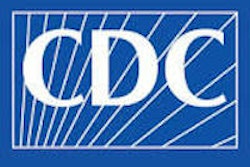Cancer incidence rates have held steady in the U.S., but cancer death rates declined slightly, according to a report released this week by the American Cancer Society (ACS). More than 1.6 million new cases of cancer are projected to occur in 2012, along with more than 575,000 deaths.
The ACS reported that between 2004 and 2008, the overall cancer incidence rate declined by 0.6% per year in men and was unchanged in women. Death rates for this period decreased by 1.8% per year in men and by 1.6% per year in women.
The reduction in overall cancer death rates since 1990 in men and since 1991 in women translates to more than 1 million total deaths avoided, according to the ACS Cancer Statistics 2012 report, published online January 4 in CA: A Cancer Journal for Clinicians.
Approximately 732,900 deaths were averted for men over an 11-year period. There was much less of a reduction in deaths for women, at approximately 291,500 over a 10-year period.
One in four deaths in the U.S. is caused by cancer, according to lead author Rebecca Siegel, ACS' manager of surveillance information, and colleagues. African-American men have a 15% higher incidence rate and a 33% higher death rate than Caucasian men. African-American women have a 6% lower incidence rate and a 16% higher death rate than Caucasian women. Cancers related to infectious agents, such as those of the uterine cervix, stomach, and liver, are generally higher in minority populations.
The lifetime probability of being diagnosed with an invasive cancer is 45% for men and 38% for women. However, women have a slightly higher probability of developing cancer before the age of 60 because breast cancer develops earlier than most other cancers.
Prevalence of cancer in men by type: 2012
|
Prevalence of cancer in women by type: 2012
|
The overall cancer incidence rate for children younger than 14 years increased by 0.5% per year from 2004 to 2008. This has been a consistent trend since 1975.
Leukemia is the most common cancer, representing approximately one-third of the total, followed by cancers of the brain and nervous system, at 27%.
Due to significantly improved treatments, the five-year survival rate increased from 58% for children diagnosed with cancer between 1975 and 1977 to 83% for those diagnosed between 2001 and 2007. Death rates declined from 4.9 per 100,000 pediatric patients in 1975 to 2.2 per 100,000 in 2008.



















